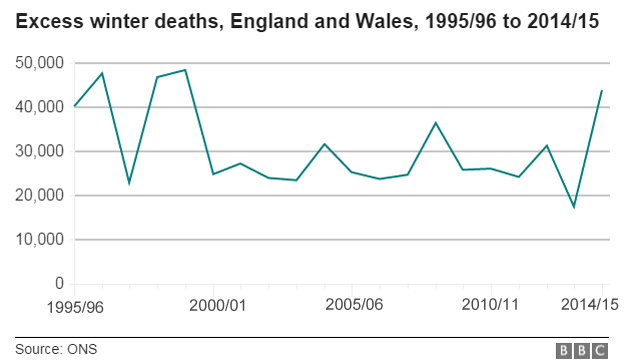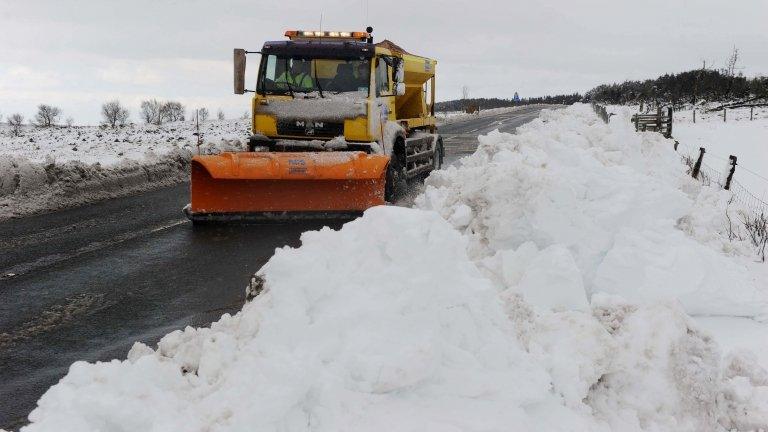Winter deaths 'highest since 1999'
- Published

There were an estimated 43,900 excess deaths in England and Wales last winter, the highest number since 1999, figures show.
The report suggests most of the deaths involved people over 75.
The flu virus was a major cause of the rise, along with an influenza vaccine that was less effective than those of previous years, experts said.
The figures are published by the Office for National Statistics and show there were more deaths in women than men.
'Notably high'
Commenting on the provisional statistics, Claudia Wells, at the ONS, said: "A major cause behind the rise was the flu virus, with estimates showing that the flu vaccine was not as effective this winter compared to previous years.
"While the cold temperature is a factor, most of last winter was warmer than average."
Respiratory illnesses such as influenza and pneumonia were the underlying causes of death in more than a third of all winter cases.
Experts say the strain of flu circulating last year had a greater impact on older people, resulting in a number of care home outbreaks and admissions to intensive care.

Meanwhile public health experts estimate that last year's flu vaccine was effective in 34% of people.
Caroline Abrahams, at Age UK, said: "Behind the figures are many individual tragedies of older people dying needlessly before their time."
The Department of Health said its cold weather plan has set out a serious of actions that can be taken by organisations and individuals to reduce cold-related illnesses and deaths.
A spokesperson added: "Excess winter deaths can be due to a number of causes including cold snaps, flu and other respiratory infections.
"Flu is serious, causing severe illness and deaths in winter. It is vital that older people, pregnant women and those with a health condition get their flu jab this winter.
Fluctuating figures
Large fluctuations in winter death rates are not uncommon and there were lower than average figures in 2013-14.
But despite this experts warn this years figures are "notably high".
The ONS defines excess winter deaths as the number of people whose deaths were registered between December and March, compared with the numbers for the previous three months and the following three months.
For the winter, the death rate was 27% higher.
Figures published last month by the National Records of Scotland show that the seasonal difference (comparing the four winter months with the average of the four-month periods before and after the winter) was 4,060 for winter 2014/15.
According to the Scottish government it was the largest seasonal increase since winter 1999/2000.
The Department of Health says the high number of excess winter deaths in 2014/15 was not unique to the UK, with 14 other European countries also reporting an increase in excess mortality.
- Published19 February 2015

- Published28 November 2014

- Published26 November 2013
